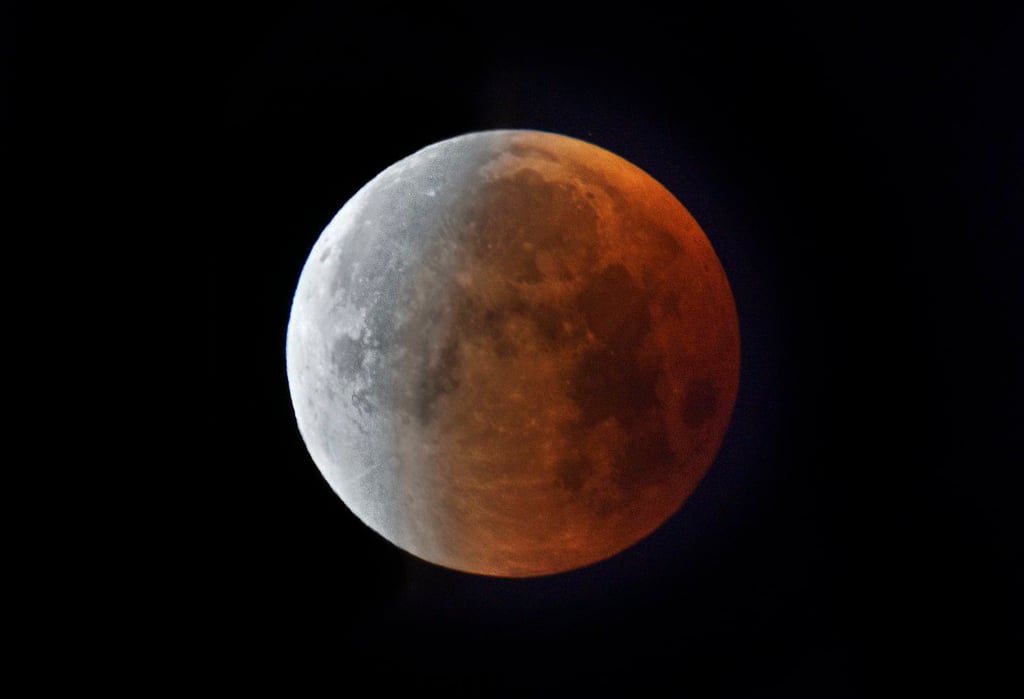
The longest partial lunar eclipse of the 21st century will occur this Friday. The eclipse will be visible to the entirety of North America and will last a staggering 6 hours.
Not only will this eclipse be the longest of the 21st century, but it will also be the longest eclipse in the past 600 years. A lunar eclipse takes place when Earth gets into a position between the moon and the sun, forming a shadow over the moon for the duration. Friday’s eclipse will not cover the entirety of the moon, thus making it a partial lunar eclipse.
Despite officially and technically being a partial lunar eclipse, Friday’s eclipse will in fact cover 97% of the moon with Earth’s shadow, which typically creates a deep red color commonly referred to as a “blood moon.”
The eclipse will begin at 1 a.m. Eastern time.
Both solar and lunar eclipses have fascinated astronomers and casual onlookers for centuries. Eclipses are well documented, anticipated, and understood in contemporary society, but were once the awe-inspiring source of deep confusion for ancient astronomers, even prompting them to produce their own theories of the solar system.
Beyond the awe of seeing the moon turn an almost bloody red, eclipses often struck real fear in ancient peoples around the world, prompting their religious leaders and shamans to find reasons for the event, leading to scores of myths and rituals that were meant to shield their people from the evil that was thought to reign at that time of such unnatural darkness.
Astronomer and anthropologist Anthony Aveni, the author of “In the Shadow of the Moon: The Science, Magic, and Mystery of Solar Eclipses” tells Smithsonian Magazine “When anything extraordinary happens in nature … it stimulates a discussion about instability in the universe.”
One of the greatest astronomical discoveries from ancient Greece: the size of the Moon
Aristarchus of Samos, an astronomer of ancient Greece, developed the first known theory of heliocentrism. Many of his texts have been lost, but one of Aristarchus’ books that did survive addresses the sizes and distances of the Sun and Moon. In this remarkable treatise, Aristarchus laid out the earliest known attempted calculations of the relative sizes and distances to the Sun and Moon.
It had long been observed that the Sun and Moon appeared to be of the same apparent size in the sky, but that the Sun was further away. They realized this from solar eclipses, caused by the Moon passing in front of the Sun at a certain distance from Earth.
Also, at the instant when the Moon is at first or third quarter, Aristarchus reasoned that the Sun, Earth, and Moon would form a right-angled triangle.
As Pythagoras had determined how the lengths of triangle’s sides were related a couple of centuries earlier, Aristarchus used the triangle to estimate that the distance to the Sun was between 18 and 20 times the distance to the Moon.
He also estimated that the size of the Moon was approximately one-third that of Earth, based on careful timing of lunar eclipses.
While his estimated distance to the Sun was too low (the actual ratio is 390), on account of the lack of telescopic precision available at the time, the value for the ratio of the size of the Earth to the Moon is surprisingly accurate (the Moon has a diameter 0.27 times that of Earth).
Today, we know the size and distance to the moon accurately by a variety of means, including precise telescopes, radar observations and laser reflectors left on the surface by Apollo astronauts. But the beauty of a lunar eclipse is just as striking, and in a way unsettling, as it was in days gone by.
See all the latest news from Greece and the world at Greekreporter.com. Contact our newsroom to report an update or send your story, photos and videos. Follow GR on Google News and subscribe here to our daily email!



